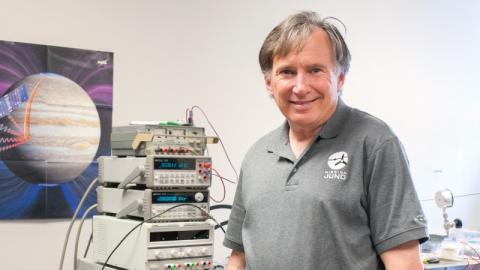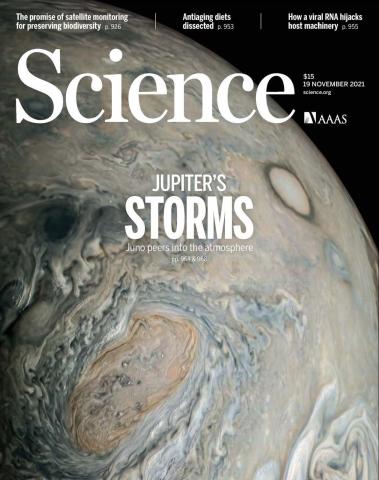ECE Professor Emeritus Paul Steffes and his colleagues with the NASA Juno Mission published a paper that is the cover feature of the November 19, 2021 issue of Science.
Paul Steffes, a professor emeritus in the Georgia Tech School of Electrical and Computer Engineering, and his colleagues with the NASA Juno Mission published a paper that is the cover feature of the November 19, 2021 issue of Science. This paper is entitled “Microwave observations reveal the deep extent and structure of Jupiter’s atmospheric vortices.”
Jupiter’s atmosphere has a system of zones and belts punctuated by small and large vortices, the largest being the Great Red Spot. How these features change with depth is unknown, with theories of their structure ranging from shallow meteorological features to surface expressions of deep-seated convection. Steffes and his colleagues present observations of atmospheric vortices using the Juno spacecraft’s Microwave Radiometer. They found vortex roots that extend deeper than the altitude at which water is expected to condense, and they identified density inversion layers. Their results constrain the three-dimensional structure of Jupiter’s vortices and their extension below the clouds.
Juno began its five-year-long journey to Jupiter when it launched from Kennedy Space Center on August 5, 2011. It has been circling Jupiter since entering its orbit on July 4, 2016. Slated to continue through September 2025 or through the end of the spacecraft’s life–whichever comes first, the mission will not only continue key observations of Jupiter, but also will expand its investigations to the larger Jovian system including Jupiter's rings and large moons, with targeted observations and close flybys planned of the moons Ganymede, Europa, and Io.
Additional Images

